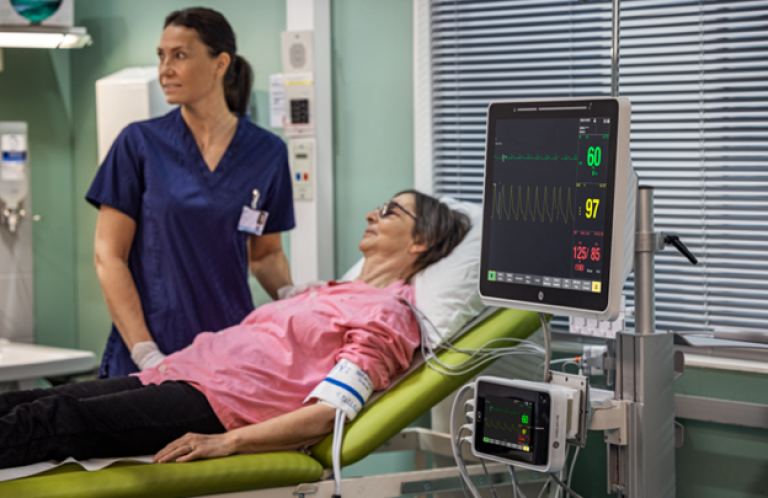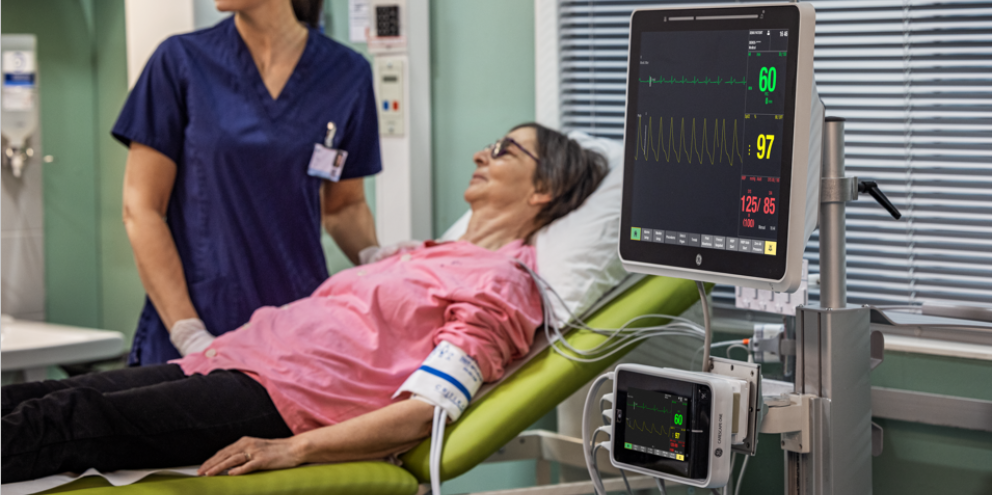
For example, clinical surveillance systems can provide a near-real-time view of each patient's status, giving healthcare professionals a complete picture of the patient based on up-to-the-minute data from an array of sources.
The potential is tremendous, but so is the opportunity for improvement.
From lack of interoperability to alarm fatigue, monitoring and managing patient information can be challenging. Most of the challenges can be attributed to a lack of standardization.
It may sound counterintuitive, but standardization creates the opportunity for more personalized care. Standardizing fleets while allowing for flexibility across multiple configurations and acuity will improve monitoring.
Here are six trends that illustrate the challenges and promises of monitoring.
1. Standardization Is Essential
This is both a hardware and a software issue.1 The former is relatively straightforward: Different monitors and diagnostic devices often need different connections and ports. Over the last few years, we've seen a move toward greater standardization. It hasn't been a perfectly smooth transition, but the improvement has been dramatic.
Software is more complicated. Image data differs in structure and workflow when it's a lab result, a medication order, etc. Valuable data may be lost when it doesn't fully integrate with clinical decision support tools.2 Devices must be able to communicate across multiple platforms, manufacturers, and health systems. When they don't, it can result in variations in how patient information is presented and accessed. Interoperability can solve this problem.
2. Interoperability Improves Monitoring
The fact that healthcare systems use different platforms, networks, vendors and systems isn't the problem. The problem is that they don't talk to each other. Interoperability solves that problem, allowing data to be integrated from across a range of medical devices, platforms, labs, EHRs, etc. It allows for seamless access to complete patient data.
Increasingly, vendors are creating devices that communicate with each other and with existing solutions. Improving how we monitor patients leads to better care, less waste, and increased patient and clinician satisfaction.
3. One Monitor Follows the Patient
Patient monitors are typically purchased for a specific care area, be it the ICU, the emergency department or the operating room. And again, these monitors have different, often incompatible, connections, ports and configurations.
Some hospital systems have begun using a single monitor platform: one monitor that accommodates patients across multiple care areas. Patient data continues to be collected during transport and at the bedside, ensuring continuity.3
4. Adaptable Acuity Reduces Transfers
Another emerging trend is the acuity-adaptable patient room. The patient stays in the same room through discharge regardless of the patient's level of acuity. This gives the care team flexibility in the way it uses bedspace to follow patients; they can escalate or de-escalate care without transferring the patient.
Rather than move the patient to the technology, acuity adaptability empowers healthcare professionals to bring ever more portable technology to the bedside, from diagnostics to monitoring tools. This has the potential to improve both patient care and clinician satisfaction.
Moving patients increases risk for patients and puts a strain on the care team—and on health system resources. Adaptable acuity solves this challenge and makes it easier to monitor the patient throughout their care journey.
5. Easy-to-Clean Devices Reduce HCAIs
One monitoring trend has nothing to do with data and everything to do with patient safety: easy-to-clean devices that reduce healthcare-acquired infections (HCAI). Up to one-third of HCAIs can be prevented by proper cleaning of medical equipment.4 HCAIs prolong hospital stays, increase the risk morbidity and mortality, contribute to the development of resistant bacteria, and create a tremendous financial burden on hospital systems.4
6. Reduce Alarm Fatigue
The increased volume of false alarms can desensitize clinical staff to the ones that matter. Alarm fatigue can increase response time to future alerts, increasing the risk of patient harm and even mortality.5
This, too, is solvable: One study found that innovative monitoring solutions can allow for patient-specific alarm thresholds which limit the number of unnecessary alerts.6 The study is not without its limitations, though, as researchers acquired data from a single, high acuity tertiary care center, and, as such, the data may not exactly be representative of patients in general. Additionally, the data collected was specifically pulse oximetry-based continuous monitoring data from general care inpatient encounters, which is only one kind of measurement.
That said, studies like these demonstrate that all of the challenges to patient monitoring discussed above can be mitigated or eliminated. Healthcare systems and manufacturers are embracing innovations that will give clinicians the right information at the right time. This will ultimately improve patient outcomes and safety, help hospitals control costs and enhance clinician satisfaction.
References
1. Tscholl, D. W., Handschin, L., Rössler, J., et al. (2019). It's not you, it's the design - common problems with patient monitoring reported by anesthesiologists: a mixed qualitative and quantitative study. BMC anesthesiology, 19(1), 87. https://doi.org/10.1186/s12871-019-0757-z.
2. Sutton RT, Pincock D, Baumgart DC, et al. An overview of clinical decision support systems: Benefits, risks, and strategies for success. NPJ Digital Medicine. February 6, 2020;3:17. doi: 10.1038/s41746-020-0221-y.
3. Scope and scale of patient monitoring . Healthcare Purchasing News Sept. 2022 https://www.hpnonline.com/surgical-critical-care/article/21280971/scope-and-scale-of-patient-monitoring
4. Ilyas F, Burbridge B, Babyn P. Health Care-Associated Infections and the Radiology Department. J Med Imaging Radiat Sci. 2019;50(4):596-606.e1. doi:10.1016/j.jmir.2019.07.011
5. Woo M, Bacon O. Alarm Fatigue. In: Hall KK, Shoemaker-Hunt S, Hoffman L, et al. Making Healthcare Safer III: A Critical Analysis of Existing and Emerging Patient Safety Practices [Internet]. Rockville (MD): Agency for Healthcare Research and Quality (US); 2020 Mar. 13. https://www.ncbi.nlm.nih.gov/books/NBK555522/
6. McGrath SP, Perreard IM, McGovern KM, Blike GT. Understanding the "alarm problem" associated with continuous physiologic monitoring of general care patients. Resusc Plus. 2022;11:100295. Published 2022 Aug 20. doi:10.1016/j.resplu.2022.100295








